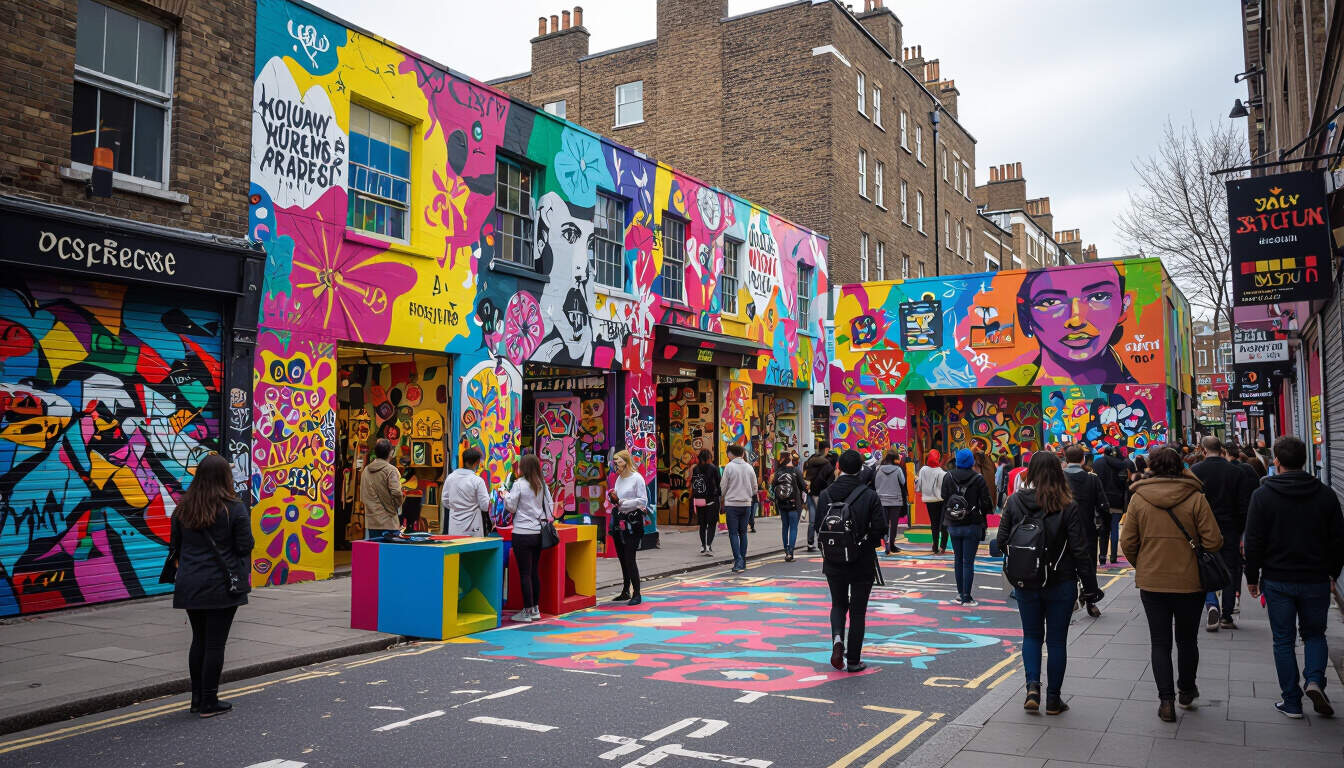Innovative Guerrilla PR Tactics for Art Galleries
 by Lilian Nienow
by Lilian Nienow
Discover how art galleries can use creative, low-cost PR strategies to attract audiences and build buzz. From street events to viral social media ideas, these tactics help small businesses stand out in competitive markets, fostering growth and community engagement.

Art galleries often face challenges in reaching new audiences without large budgets. Guerrilla PR offers a fresh approach by using creativity and surprise to generate attention. For instance, guerrilla PR involves unexpected actions that spark conversations and media interest.
One effective tactic is organizing pop-up events in unexpected locations. Imagine setting up a temporary exhibit in a busy park or shopping area. This method draws passersby and creates immediate excitement, turning casual viewers into loyal visitors. Such events can lead to organic shares on social platforms, amplifying reach without paid ads.
Another idea is partnering with local artists for collaborative projects. By involving community members, galleries can host interactive workshops that encourage participation. These activities not only showcase artwork but also build lasting connections, making the gallery a hub for cultural exchange.
Building Buzz Through Social Media Stunts
Social media plays a key role in modern PR strategies. Galleries can create simple yet impactful stunts, like a themed photo challenge where participants share their interpretations of exhibited pieces. This encourages user-generated content, which spreads quickly and enhances visibility.
For example, a gallery might hide small artworks around the city and challenge people to find them. Participants post photos online, tagging the gallery and using a specific hashtag. This not only drives foot traffic but also fosters a sense of adventure and community involvement.
Leveraging Local Influencers
Working with micro-influencers can yield impressive results. These individuals have dedicated followings in niche areas, such as art enthusiasts or local bloggers. By inviting them to exclusive previews, galleries gain authentic endorsements that feel genuine and trustworthy.
In practice, an influencer might share a behind-the-scenes look at a new exhibit, reaching thousands without high costs. This tactic helps galleries connect with targeted audiences who are more likely to attend events and make purchases.
Creating Themed Events and Experiences
Themed events add an extra layer of appeal. For instance, galleries could align exhibits with seasonal festivals or holidays, incorporating elements that tie into broader cultural moments. This makes the gallery relevant and timely, attracting media coverage.
One gallery successfully hosted a night where visitors created their own art inspired by the display. This interactive element turned a standard viewing into an memorable experience, encouraging repeat visits and word-of-mouth promotion.
Measuring Success and Adjusting Tactics
To ensure these strategies work, galleries should track outcomes like attendance numbers and social media engagement. Simple tools, such as website analytics, provide insights into what resonates most. Based on this data, tactics can be refined for better results.
For small business owners, starting small allows for experimentation. Begin with one guerrilla PR idea and scale up as confidence grows. The key is consistency and creativity, turning limited resources into powerful assets.
Real-World Examples
Consider a gallery that used sidewalk chalk art to preview an upcoming show. Artists drew related designs on public paths, drawing crowds and sparking curiosity. This low-effort approach led to increased inquiries and sold-out openings.
Another example involves mailing mystery packages to local opinion leaders, containing exclusive invites and small art pieces. Recipients shared their surprises online, creating a ripple effect of interest.
By focusing on innovation and engagement, art galleries can transform their PR efforts. These tactics not only save money but also build authentic relationships with audiences, ensuring long-term success in niche markets.
In summary, adopting art galleries specific guerrilla PR methods empowers entrepreneurs to think outside the box. With a bit of planning and creativity, even the smallest gallery can achieve significant visibility and growth.
